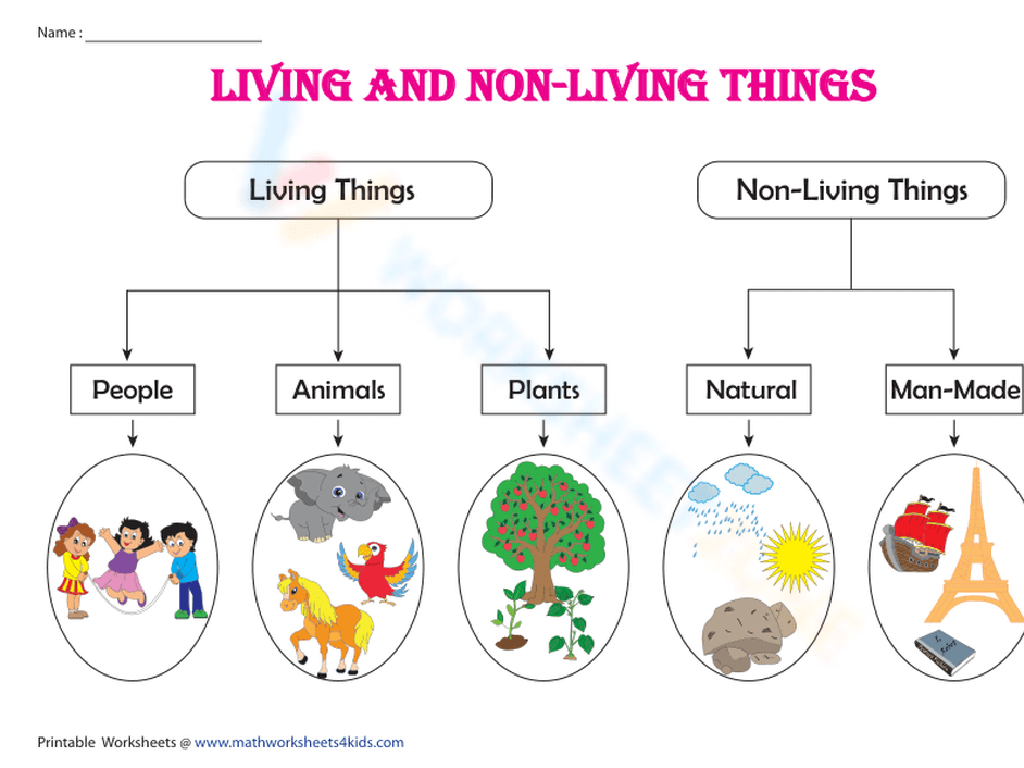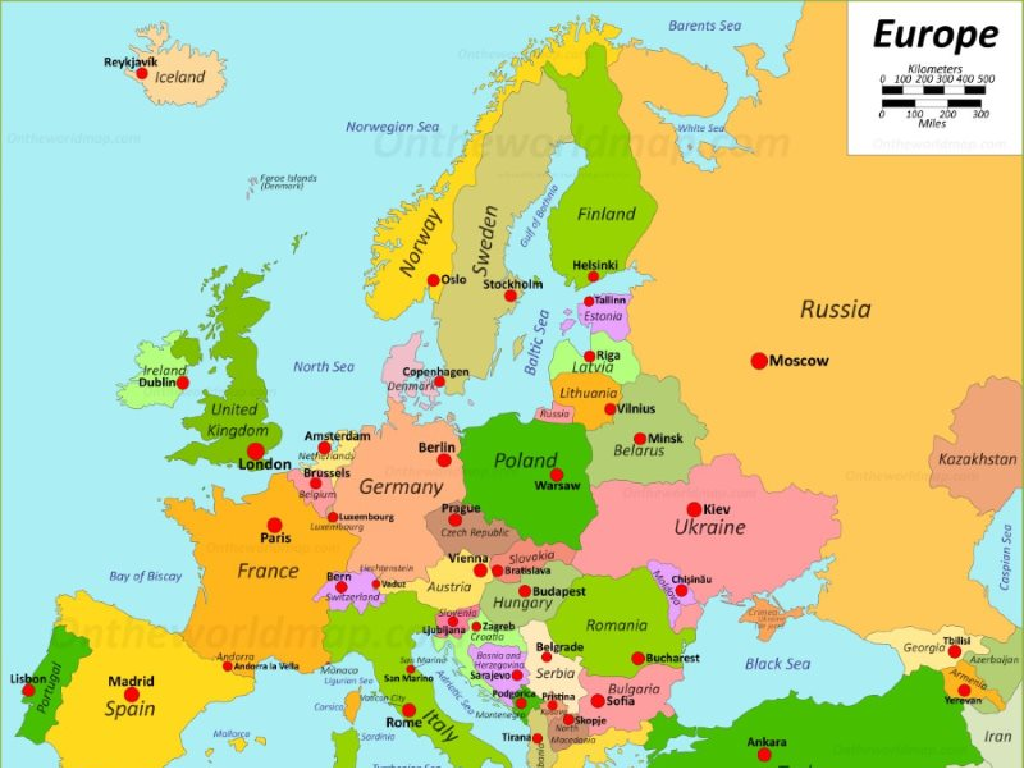Classify Quadrilaterals I
Subject: Math
Grade: Eighth grade
Topic: Two-Dimensional Figures
Please LOG IN to download the presentation. Access is available to registered users only.
View More Content
Classifying Quadrilaterals in 2D Shapes
– Define quadrilaterals
– A quadrilateral is a 4-sided polygon.
– Characteristics of 2D shapes
– Look for parallel sides, angle types, and side lengths.
– Classifying shapes: Why?
– Helps in geometry, solving problems, and in real-life applications.
– Quadrilateral hierarchy
– Understand the relationships between different quadrilaterals.
|
Begin the lesson by defining quadrilaterals as four-sided polygons, emphasizing the variety within this category, including squares, rectangles, and trapezoids. Discuss the characteristics of 2D shapes, such as the number of sides, length of sides, and types of angles. Explain the importance of classifying shapes in mathematical problem-solving and real-world applications, such as architecture and design. Introduce the hierarchy of quadrilaterals, showing how specific categories fit within broader ones. Encourage students to think critically about the properties of each shape and how they can be used to classify them correctly.
Exploring Quadrilaterals
– Define a quadrilateral
– A polygon with four edges (sides) and four vertices (corners).
– Characteristics of quadrilaterals
– Each has four sides and four angles, summing to 360 degrees.
– Examples of quadrilaterals
– Squares, rectangles, and rhombuses are quadrilaterals.
– Non-examples to contrast
– Circles and triangles are not quadrilaterals.
|
Begin the lesson by defining a quadrilateral as a four-sided polygon, ensuring students understand the basic geometric vocabulary. Highlight the key characteristics that all quadrilaterals share, such as having four sides and four angles, with the angles adding up to 360 degrees. Provide clear examples of common quadrilaterals, including squares, rectangles, and rhombuses, to help students visualize. Additionally, present non-examples like circles and triangles to clarify what does not constitute a quadrilateral. Encourage students to identify and classify different quadrilaterals in their environment or from geometric shapes provided in class.
Classifying Quadrilaterals
– Definition of a Quadrilateral
– A four-sided polygon with various properties
– Properties of Squares and Rectangles
– Squares and rectangles have 4 right angles; squares have equal sides
– Characteristics of Rhombi and Parallelograms
– Rhombi have equal sides; parallelograms have parallel opposite sides
– Identifying Trapezoids
– A trapezoid has only one pair of parallel sides
|
This slide introduces students to the classification of quadrilaterals based on their properties. A quadrilateral is a polygon with four sides and four angles. Key properties to identify include the presence of right angles, equal sides, and parallel sides. Squares and rectangles both have four right angles, but squares have the added property of four equal sides. Rhombi are characterized by four equal sides, while parallelograms have two pairs of parallel sides. Trapezoids are distinct in having only one pair of parallel sides. Understanding these properties helps students differentiate between the types of quadrilaterals. Encourage students to draw each type and label their properties for a clearer understanding.
Properties of Quadrilaterals
– Quadrilateral side properties
– Sides can be equal (as in a square) or unequal (as in a kite).
– Types of angles in quadrilaterals
– Angles can be right (90°), acute (90°).
– Parallelism and perpendicularity
– Opposite sides are parallel in rectangles, and right angles indicate perpendicularity.
– Classifying quadrilaterals
– Use properties to classify as square, rectangle, rhombus, etc.
|
This slide introduces the basic properties of quadrilaterals that are essential for classification. Students should understand that quadrilaterals can have sides that are either all equal or unequal, and this is a key factor in determining the specific type of quadrilateral. Angles are another important property; knowing whether they are right, acute, or obtuse helps in classification. Additionally, recognizing parallel and perpendicular sides can distinguish between shapes like rectangles and rhombuses. Encourage students to use these properties to classify quadrilaterals into categories such as squares, rectangles, trapezoids, and kites. Provide examples of each and have students practice identifying the properties in various quadrilaterals.
Hierarchy of Quadrilaterals
– Quadrilateral family tree
– A diagram showing how different quadrilaterals are related
– Subsets of quadrilaterals
– Squares are rectangles, but not all rectangles are squares
– Relationships between quadrilaterals
– How properties of one shape apply to another, like parallelograms to rhombi
– Exploring examples
– Look at real-life objects and classify them as specific quadrilaterals
|
This slide introduces students to the concept of the quadrilateral family tree, which helps them understand how different quadrilaterals are related and categorized. Start by explaining that all quadrilaterals are polygons with four sides, and then delve into the subsets, such as squares, rectangles, parallelograms, and trapezoids. Emphasize that some quadrilaterals are more specific versions of others, like how a square is a special kind of rectangle with all sides equal. Use diagrams to illustrate the relationships and encourage students to think of examples of each quadrilateral in their environment. This will help them visualize the concepts and apply their knowledge to real-world situations.
Classifying Quadrilaterals
– Steps to classify quadrilaterals
– Observe sides, angles, and symmetry
– Use properties for identification
– Sides equal? Angles right? Parallel sides?
– Practice with examples
– Apply steps to example shapes
– Quadrilateral types
|
Begin by explaining the step-by-step process to classify quadrilaterals, which includes observing the length of sides, the measures of angles, and any lines of symmetry. Emphasize the importance of using properties such as parallel sides, equal angles, and equal sides to identify the type of quadrilateral (e.g., square, rectangle, rhombus, parallelogram). Provide practice examples for students to apply these steps and identify different quadrilaterals. This will help solidify their understanding of the properties and characteristics of each type. Encourage students to explain their reasoning for each classification to develop their critical thinking skills.
Real-Life Quadrilaterals
– Spot quadrilaterals in daily life
– Look for four-sided shapes around you, like windows or tables.
– Quadrilaterals in design and architecture
– Buildings and furniture often use quadrilateral shapes for strength and aesthetics.
– Practicality of shape knowledge
– Understanding shapes helps in fields like engineering, art, and technology.
– Discuss everyday examples
|
This slide aims to connect the abstract concept of quadrilaterals with concrete examples that students encounter in their daily lives. Encourage students to identify and classify the quadrilaterals they see every day, such as in their classroom, at home, or in public spaces. Discuss how architects and designers use these shapes to create functional and visually appealing structures and objects. Emphasize the importance of geometric knowledge in various professions and practical situations. Ask students to bring in photos or sketches of quadrilaterals they find for a class discussion to make the learning experience interactive and engaging.
Class Activity: Quadrilateral Hunt
– Search for classroom quadrilaterals
– Group task: Make a quadrilateral poster
– Work together to identify and draw various quadrilaterals
– List properties on your poster
– Include sides, angles, and symmetry
– Present quadrilateral findings
|
This interactive activity is designed to help students apply their knowledge of quadrilaterals by identifying them in their immediate environment. Divide the class into small groups and provide materials for creating posters. Each group should look for real-life examples of quadrilaterals in the classroom, such as windows, tiles, or book covers. They will then draw these shapes on their poster and label them with their properties, such as parallel sides, equal angles, and lines of symmetry. Encourage creativity and ensure each group understands the properties that define the different quadrilaterals. After completing their posters, each group will present their findings, explaining how they classified each shape. This will reinforce their understanding and help them recognize quadrilaterals in the world around them.
Conclusion & Homework: Quadrilaterals
– Recap: Classifying Quadrilaterals
– Homework: Find & Draw 5 Quadrilaterals
– Look around your home for real-life quadrilaterals
– Classify your Quadrilaterals
– Determine the type of each quadrilateral
– Upcoming Quiz: Study Quadrilaterals
– Review today’s lesson to prepare for the quiz
|
As we conclude today’s lesson on classifying quadrilaterals, students should review the properties that distinguish different types of quadrilaterals such as squares, rectangles, rhombuses, parallelograms, and trapezoids. For homework, students are tasked with identifying quadrilaterals in their home environment, drawing them, and classifying each one based on their properties. This exercise will help reinforce their understanding and recognition of quadrilaterals in real-world contexts. Additionally, students should be informed that there will be a quiz in the next class, so they should study the characteristics and classification of quadrilaterals covered in today’s lesson. Provide examples of what to look for at home, such as picture frames, tiles, or tabletops, and encourage creativity in finding and classifying each quadrilateral.






